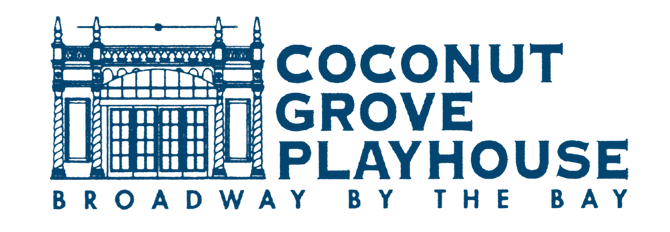Architect Richard Kiehnel of Kiehnel and Elliott designs the theater.
Built by local realtors Irving J. Thomas and Fin L. Pierce, the building also includes shops, offices, and apartments. The cost in 1926: $500,000 ($8.5 M in 2024 dollars), plus land costs.
The Grove opens as a Paramount movie theater.
It claims to be the largest theater in Miami with well over 1000 seats. It has the country’s largest Wurlitzer organ, and it is air conditioned -- rare in that era.
The Stock Market crashes
and the Depression begins.
The theater suffers through hard economic times.
In 1933 the building faces foreclosure, and in following years is only occasionally used.
The theater is used by the Air Force for training navigators.
Following the war, the building is shuttered.
George Engle, a multi-millionaire oilman, buys the theater.
He hires the architect Alfred Browning Parker to transform the theater (at great expense) into an elegant showplace, complete with cocktail lounge,restaurant and single level orchestra seating for 800.
Gorge Engle, a multi-millionaire oilman, buys the theater.
He hires the architect Alfred Browning Parker to transform the theater (at great expense) into an elegant showplace, complete with cocktail lounge,restaurant and single level orchestra seating for 800.
Gorge Engle, a multi-millionaire oilman, buys the theater.
He hires the architect Alfred Browning Parker to transform the theater (at great expense) into an elegant showplace, complete with cocktail lounge,restaurant and single level orchestra seating for 800.
The Coconut Grove Playhouse opens with fanfare and celebrities.
The play Engle bills as “the laugh sensation on two continents” is the US premier of Beckett’s “Waiting for Godot” The audience is not amused; the play is a stunning flop.
For the next four seasons, Engle heavily subsidizes the Playhouse,
Engle had enough.
In the spring he turns over the theater leadership to Owen Phillips, who has been working for two years as the Playhouse’s managing director.
Owen Phillips takes a long-term lease on the theater.
He presents excellent shows, including the premiere of “Night of the Iguana” by Tennesse Williams. But he has financial woes– he faces a tax lien of more than $80,000. His last show is in May 1961. He later resigns.
A group of investors leases the playhouse
and hires a director, but the shows do not sufficiently attract audiences. The playhouse is intermittently closed and then is shuttered.
Producer Zev Bufman takes his hit “Pajama Tops” on national tour.
The theater where it is to play burns to the ground and Bufman needs a new venue—fast. Shown the Coconut Grove Playhouse, he books it for five weeks, and “Pajama Tops” opens on October 9, 1962.
Bufman loves Coconut Grove.
He books the Playhouse for a year, and enjoys success.He then takes a five-year lease with an option to buy the Playhouse from George Engle, which he does in 1965.
The Playhouse gives birth to the Coconut Grove Art Festival.
To create buzz for the show “Irma la Douce,” Charlie Cinnamon, Bufman’s publicity director, transforms Coconut Grove. He fills the streets with artists to give it a “Left Bank” feel. The art show is still a hit 60 years later!
Zev Bufman has enjoyed success for eight years with the Playhouse,
so much so that he adds a 300-seat mezzanine. Now he wants new opportunities. He runs into Eddie Bracken, famed actor and recently-turned producer, who is interested in buying the theater.
Eddie Bracken buys the Playhouse
for ~$750,000; Bufman stays on as an adviser. Bracken had purchased the theater not understanding that the coming season’s subscriptions had already been spent, so there is little revenue generated. He is plagued with financial problems.
The Playhouse has no 1971-1972 season.
A creditor takes legal action
and the Coconut Grove Playhouse is set to be auctioned on the steps of the County Courthouse on November 10; this is extended to January 26, 1972.
Robert Fishko and Arthur Cantor buy the Playhouse
For four years the Playhouse presents popular plays and musicals of the day
The Miami Players Repertory Theatre purchases the theater.
The State agrees to purchase the theater;
In December theater giant Jose Ferrer is hired as the theater’s director,
Players State Theatre is renamed Coconut Grove Playhouse.
Ferrer heads the Playhouse for two years,
In August, Ferrer informs the Board that he wants to leave.
In January, Ferrer resigns and the Playhouse Board hires Arnold Mittelman as producing artistic director.
In addition to his theater directing, Mittelman proves to be an innovative and successful fundraiser,
He makes changes—artistic, financial, and even physical.
Mittelman oversees production of more than 200 ethnically diverse plays, musicals, educational, and special events
Judith Delgado initiates a broad program for the Education Department.
The plays and musicals at the Playhouse during Mittelman’s tenure include 30 world or American premieres
and reinterpreted revivals, many of which he directs. Forty Playhouse productions transfer directly to Broadway or to other national and international venues.
